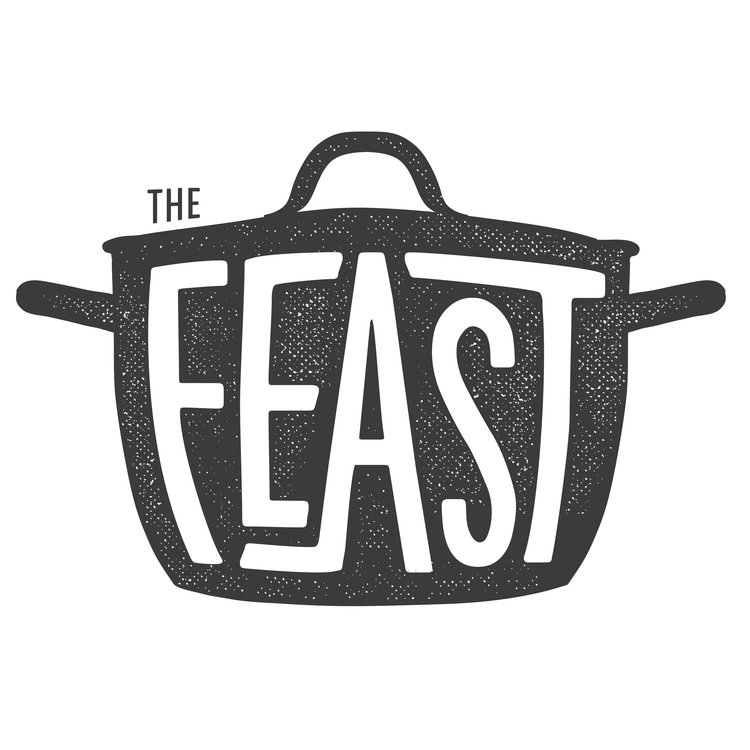Episode 21
Edible Monuments: Naples' Salami Castle of 1768
Cuccagna Arch of Bread, Cheese, and Suckling Pigs on the Feast of Saint John the Baptist, Naples 1630. Courtesy of the Getty Research Institute, Los Angeles. Photo by Mike Portt
Forget Hansel & Gretel's candy cottage, Naples was building fortresses of food in the 18th century! This week, we're investigating the Neapolitan tradition of cuccagna- a festival celebrating a mythical land of food, where roast chicken rained from the skies and wine flowed in rivers. Learn how early modern Neapolitans built giant edible monuments to celebrate birthdays, weddings, and holidays, complete with fortresses of ham, bell towers made of cheese, and lakes of beer! Was it all in good gluttonous fun or did the festival have a deeper political purpose? We'll also speak with Dr. Alan Darr at the Detroit Institute of Arts, where you can see relics of these early modern feasts at the Edible Monuments Exhibition, on until April 16th.
A Land of Food
Numerous prints and drawings from the medieval and early modern era depicted the mythical land of Cockaigne (or Cuccagna), where food and drink could be found everywhere and anywhere. Below is a 17th century Italian etching of the land where the lazy and the greedy were rewarded. Each section of the etching depicts a different feature of the mythical land, from rain showers of pearls & diamonds (upper left hand corner) to roast chicken (upper right hand corner). In the center is the Cuccagna prison, the punishment for those 'who wish to work'.
"Description of the Land of Cockaigne, where whoever works the least earns the most", Bassano, 1606, Courtesy of the Getty Research Institute, Los Angeles, Photo by Mike Portt
Eggs on the Run!
Italy wasn't the only country to feature a mythical land of food. A century earlier, the Dutch master, Pieter Brueghel, captured the excesses of Cockaigne in his eponymous work. Look out for the roof of cakes on the left side of the painting, and the half-eaten egg, complete with fork, running between the blissed-out eaters.
Pieter Brueghel the Elder, The Land of Cockaigne (Das Schlaraffenland), 1567.
18th century Neapolitan Cuccagna Monuments
By the 18th century, cuccagna or edible monuments, built to honor a ruler's birthday, marriage, or other celebrations had grown giant. Popular throughout Italy, the tradition reached its peak in Naples. Neapolitan crowds were often invited to "attack" or destroy the monument in front of honored guests. Below are some examples of edible constructions that were captured in festival books at the time.
Cuccagna Monument for the Birthday of Empress Elizabeth Christina, Naples, 1728-33. Designed by Domenico Antonio Vaccaro (1678-1745). Courtesy of the Getty Research Institute, Los Angeles. Photo by Mike Portt
The Edible Monument Exhibition at the Detroit Institute of Arts
The Edible Monument includes about 140 prints, rare books and serving manuals from the Getty Research Institute collection and private collections. The artworks illustrate in lush detail the delectable monuments and sculptures made of food that were an integral part of street festivals as well as court and civic banquets in Europe in the 16th to 19th centuries. The exhibition has been organized by the Getty Research Institute, Los Angeles.
The Exhibition runs from December 16th, 2016 - April 16th, 2017 (Easter Sunday).
Learn more about the exhibition & buy tickets to the DIA.
Can't get to the exhibition? Buy the catalogue here! Edited by Marcia Reed, the organizer behind the Getty exhibition, The Edible Monument: The Art of Food for Festivals is a great collection of articles on feasting traditions in early modern Europe, including the cuccagna.
Marcia Reed, ed., The Edible Monument: The Art of Food for Festivals (2015)
More Sources on the Land of Cockaigne & Queen Charlotte of Naples
Justin Vovk, In Destiny's Hands: Five Tragic Rulers, Children of Maria Theresa (2010)
Episode Soundtrack
Harry McClintock, Big Rock Candy Mountain (1928)
Andy G. Cohen, "A Perceptible Shift" (A Perceptible Shift by Andy G. Cohen is licensed under a Attribution License).
Jahzzar, "Bodies" (Bodies by Jahzzar is licensed under a Attribution-ShareAlike License.)
United States Army Old Guard Fife and Drum Corps "Monteverdi's Toccata from L'Orfeo" (Monteverdi's Toccata from L'Orfeo by The United States Army Old Guard Fife and Drum Corps is licensed under a Public Domain Mark 1.0 License.)
Philipp Weigl, "Subdivision of the Masses" (Subdivision of the Masses by Philipp Weigl is licensed under a Attribution License).
Soni Ventorum Wind Quintet, "Danzi: Wind Quintet Op 67 No 3 In E-Flat Major, 2 Andante Moderato" (Danzi: Wind Quintet Op 67 No 3 In E-Flat Major, 2 Andante Moderato by Soni Ventorum Wind Quintet is licensed under a Attribution-ShareAlike 3.0 International License)








